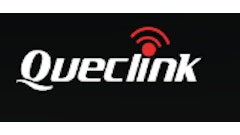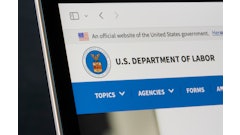
With the possibility of up to $1.5 trillion in government infrastructure work on the horizon, asphalt contractors can envision significant and rapid growth opportunities and planning cash flows will be critical.
How to best manage this potential business growth often comes down to being audit ready.
As many asphalt contractors know, audits are required to assure that government funds are being used in compliance with applicable laws, rules and regulations in accordance with contracts. By being compliant, contractors have the ability to enhance the overall stability of their operations, especially if the majority of their business comes from government contracts.
For contractors with cost-plus contracts with government agencies, a big part of that compliance and planning is understanding and monitoring the company’s overhead rates.
HOW OVERHEAD RATES AFFECT CASH FLOWS
Typically, under cost-plus government contracts, direct costs of the project are billed monthly, with a percentage applied to cover overhead, as well as general and administrative costs. These costs include indirect labor, payroll taxes and employee benefits, administrative salaries and costs, etc. The rates can be as simple as one all-encompassing rate expressed as a percentage of direct labor, or more complex multiple-step calculations. Whatever the rate structure, the purpose of the overhead rates is to provide a mechanism to bill for these costs.
Since final overhead rates are determined using ACTUAL costs, it is impossible to know what the final overhead rate will be until the year is complete. Therefore, rates are established to use for billings during the year. Many times this is the prior year’s final rate. Under most contracts, once the year is over and final rates are established, they are compared to the rates used for billing during the year, and the difference is settled with a cash payment either to, or from the government agency.
If there have been significant changes in overhead costs and rates, company management should understand the effect on the overhead rates to avoid any unexpected cash requirements due to rate fluctuations.
IS A HIGHER OVERHEAD RATE BETTER?
Generally speaking, no. Higher overhead indicates lower efficiency. Yes, for cost-plus contracts, billings will be increased, but the increased billings are to cover increased costs. Remember, final overhead rates are based on actual costs, so it’s dollars in-dollars out. If the company also has fixed-price type contracts, those contract prices will have to cover more overhead costs, which reduces profit.
For closely held companies, one way to help maximize cash flows to the owners is through compensation, which is included in overhead. To be an allowable cost to bill to a government agency, the amount of compensation must be reasonable. Since what is “reasonable” could be different depending on the auditor, it is imperative to support executive and owner compensation by comparison to compensation studies, and bonuses should be awarded based on merit. Compensation in excess of what is reasonable could be disallowed and considered a distribution of profits, which is not an allowable cost for government contracts.
WHAT’S THE GOAL?
The bottom line is that overhead rates drive cash flows for those contractors with cost-plus contracts, and those rates must be constantly monitored and understood if management is to have a good handle on future cash flows. Well established contractors should only experience significant rate fluctuations when their business model changes. Smaller contractors may experience significant changes in their overhead structure though, as they often have sudden changes in contracting volume.
Think of it as an income tax bill. It is possible to get a major refund at the end of the year, but getting one means too much tax has been paid. It’s money contractors could have used along the way. Conversely, overpayment by the government is really a float that has to be refunded at the end of the year, not a bonus to be spent as it arrives. If the contractor doesn’t plan for it, there could be some unwanted surprises.
 John Mahaffey, Principal with Gorfine, Schiller & Gardyn
John Mahaffey, Principal with Gorfine, Schiller & Gardyn
John Mahaffey, a Principal with Gorfine, Schiller & Gardyn, has more than 20 years of accounting experience. John specializes in performing audits of indirect cost rates for state highway contractors, assists in preparing incurred cost submissions for federal government contractors, and performs audits, reviews, compilations and tax work for real estate developers and investors. For more information about Gorfine, Schiller & Gardyn, please click here.



















